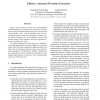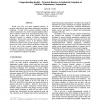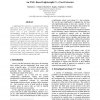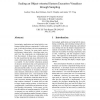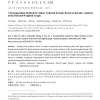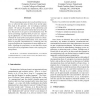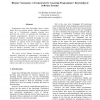IWPC
2003
IEEE
14 years 4 months ago
2003
IEEE
Legacy code can often be made more understandable and maintainable by extracting out selected sets of statements to form procedures and replacing the extracted code with procedure...
IWPC
2003
IEEE
2003
IEEE
Comprehending Reality - Practical Barriers to Industrial Adoption of Software Maintenance Automation
14 years 4 months ago
Recent years have seen many significant advances in program comprehension and software maintenance automation technology. In spite of the enormous potential savings in software ma...
IWPC
2003
IEEE
14 years 4 months ago
2003
IEEE
Increasingly focus in the software comprehension community is shifting from representing the results of analysis in the graph and database domain to reflecting insights directly i...
IWPC
2003
IEEE
14 years 4 months ago
2003
IEEE
A lightweight fact extractor is presented that utilizes XML tools, such as XPath and XSLT, to extract static information from C++ source code programs. The source code is first co...
IWPC
2003
IEEE
14 years 4 months ago
2003
IEEE
Increasingly, applications are being built by combining existing software components. For the most part, a software developer can treat components as black-boxes. However, for som...
IWPC
2003
IEEE
14 years 4 months ago
2003
IEEE
Traditional approaches for program comprehension use static program analysis or dynamic program analysis in the form of execution traces. Our approach, however, makes use of runti...
IWPC
2003
IEEE
14 years 4 months ago
2003
IEEE
IWPC
2003
IEEE
14 years 4 months ago
2003
IEEE
When computing program slices on all variables in a system, we observed that many of these slices are the same. This leads to the question: Are we looking at software clones? We d...
IWPC
2003
IEEE
14 years 4 months ago
2003
IEEE
Programmers must attain knowledge about a system before they can perform specific software maintenance tasks on it. Traditionally, computer scientists have described the activity ...
IWPC
2003
IEEE
14 years 4 months ago
2003
IEEE
During software evolution, adaptive, and corrective maintenance are common reasons for changes. Often such changes cluster around key components. It is therefore important to anal...
